Search results for: 7Ps of Marketing
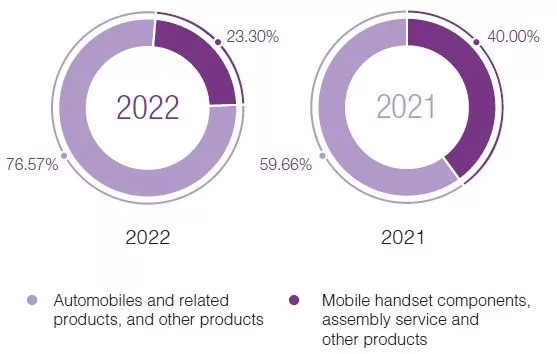
BYD marketing mix (BYD 7Ps of marketing) comprises elements of the marketing mix that consists of product, place, price, promotion, process, people and physical evidence for the one of the leading rechargeable battery manufacturers in the global arena. Product Element in BYD Marketing Mix (BYD 7Ps of Marketing) BYD Group engages in diversified market segments, such as smart phones, tablet computers, smart home devices, game hardware, drones, Internet of Things, robots, communication equipment and medical and health equipment. The table below the complete range of BYD product categories. Product category Products Automobile Vehicles, buses and trucks Rail transit Medium-capacity “SkyRail” and low-capacity “SkyShuttle” Renewable energy batteries, solar energy products, energy storage Electonic Products and services for a wide range of products such as smartphones, tablet PCs, new energy vehicles, residential energy storage, smart home, game hardware, unmanned aerialvehicles, Internet of Things, robotics, communication equipment, health devices etc. BYD Product Categories Despite the diverse product category, automobiles are the biggest source of revenue for the company. Specifically, as illustrated in figure below, the share of automobiles and related products of total revenues increased from 59.66% in 2021 to 76.57% in 2022. This tendency is likely to persist in the longer term perspective. Revenue breakdown by product category[1] Place Element in BYD Marketing Mix (BYD 7Ps of Marketing) In 2022 BYD sold EVs to more than 400 cities in over 70 countries and regions across the six continents of the world.[2] The effectiveness of BYD’s distribution channels is a critical factor in reaching and satisfying the ever-evolving needs of its target audience. Utilizing a combination of authorized dealerships, online platforms, and strategic partnerships, BYD aims to create a seamless experience for customers. A critical analysis of these channels should focus on their efficiency in delivering products to consumers, their contribution…

Marriott marketing mix (Marriott 7Ps of marketing) comprises elements of the marketing mix that consists of product, place, price, promotion, process, people and physical evidence. Product Element in Marriott Marketing Mix (Marriott 7Ps of Marketing) Marriott offers a wide range of services to its guests. These include, but not limited to accommodation, meetings and events, food and beverage, as well as, fitness and recreation. The level of services varies according to the brand tier. The table below illustrates Marriott brand tiers and respective brands. Brand Tier Brand Names Classic Luxury The Ritz-Carlton, St. Regis, JW Marriott, Ritz-Carlton Reserve, The Luxury Collection, W Hotels, EDITION, Marriott Hotels Premium Sheraton, Delta Hotels, Le Méridien, Westin, Renaissance Hotels, Gaylord Hotels Select Courtyard Hotels, Four Points, Spring Hill Suites, Protea Hotels, Fairfield Inn & Suites, City Express, AC Hotels, Aloft Hotels, Moxy Hotels Long Stays Marriott Executive Apartments, Residence Inn by Marriott, TownePlace Suites by Marriott, element by Westin, Homes & Villas by Marriott International Distinctive Autograph Collection Hotels, Design Hotels, Tribute Portfolio Marriott International brands Place Element in Marriott Marketing Mix (Marriott 7Ps of Marketing) At the end of 2022, Marriott International had nearly 8,300 properties and approximately 1.5 million rooms in 138 countries and territories. [1] The largest hotel chain in the world directly operates 2,053 properties with 576,243 rooms and the remaining properties are franchised. The company has a strong presence in major cities, tourist destinations, and business districts. Marriott also has a growing presence in emerging markets. Price Element in Marriott Marketing Mix (Marriott 7Ps of Marketing) Marriott International uses the following pricing strategies: Dynamic pricing strategy. Marriott International uses dynamic pricing to adjust the prices of its hotel rooms based on demand. According to this strategy the price of a room can vary depending on…

Netflix marketing mix (Netflix 7Ps of marketing) comprises elements of the marketing mix. These elements are product, place, price, promotion, process, people and physical evidence. Product Element in Netflix Marketing Mix (Netflix 7Ps of Marketing) Netflix produces TV series, films and games across a wide variety of genres and languages. These are referred to as content. Netflix content can be divided into three categories: Licensed non-first window content. Licensed original first-window content Owned original first-window content. Place Element in Netflix Marketing Mix (Netflix 7Ps of Marketing) Netflix has offices in over 25 countries. The entertainment services provider creates films and series in more than 50 countries. Except for Albuquerque Studios in New Mexico and the Egyptian Theater in Los Angeles, Netflix does not own the facilities in which it operates. As of December 31, 2022, the streaming service had approximately 12,800 full-time employees located globally in 65 countries. Netflix is available virtually everywhere except in China and Russia and it has 231 million paid memberships in over 190 countries. [1] Price Element in Netflix Marketing Mix (Netflix 7Ps of Marketing) Netflix pricing strategy integrates the following elements: Value pricing. The entertainment services provider employs value pricing strategy. The company determines subscription cost for its streaming service on the basis of their perceived value by customers. Moreover, the on-demand media provider closely monitors the prices of its major competitors such as HBO Max, Hulu, Amazon Prime Video, Disney+ and Apple TV+ and adjusts its prices accordingly. Geographic pricing. Netflix prices vary in over 190 countries it operates to reflect local consumer purchasing power, competition and a range of other factors. For example, As of July 2023 the Premium package with streaming quality 4K Ultra HD and HDR costs USD 19,99 in USA and R199 (USD 11,16) in South…
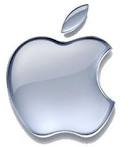
Apple marketing mix (Apple’s 7Ps of marketing) comprises elements of the marketing mix that consists of product, place, price, promotion, process, people and physical evidence. Product Element in Apple Marketing Mix (Apple 7Ps of Marketing) In 2010, before he became chief executive officer, Tim Cook claimed that Apple’s all products could fit on a single table. At that time the multinational technology company produced only 14 products.[1] It is different now. It has been noted that “no longer do the barista and the corporate executive use the same iPhone — today, there are high-end models, consumer models, and a long line of old products the company keeps around to fill every niche and price point.”[2] Today, Apple designs, manufactures and sells technological devices such as IPhone smartphones, IPad tablets, Mac desktop and portable personal computers and iPod digital music and media players. Moreover, the company generates revenues via iTunes and the iTunes Store, Mac App Store, iCloud and Apple Pay. Apple also develops iOS and OS X operating system software and a range of application software such as iLife and iWork. Lastly, Apple Corporation designs, manufactures and sells own and third-party Mac-compatible and iOS-compatible accessories, including Apple TV, headphones, cases, displays, storage devices and various other connectivity and computing products and supplies[3]. Apple also sells third-party digital content and applications through iTunes Store®, App Store®, Mac App Store, TV App Store, iBooks Store™ and Apple Music®. Table 1 below illustrates the full range of Apple products, their brief descriptions and additions in 2023: Product Categories Description Additions in 2020 iPhone A line of smartphones based on iOS operating system iPhone SE, iPhone 12, iPhone 12 Pro, iPhone 12 Pro Max, iPhone 12 mini Mac A line of personal computers based on macOS operating system 16-inch MacBook Pro, 13-inch MacBook Pro, 27-inch iMac iPad…
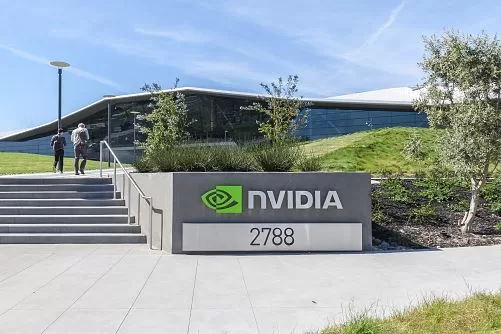
Nvidia marketing mix (Nvidia 7Ps of marketing) comprises elements of the marketing mix that consists of product, place, price, promotion, process, people and physical evidence. Product Element in Nvidia Marketing Mix (Nvidia 7Ps of Marketing) Nvidia develops and sells graphics processing units (GPUs) and related software for a wide range of applications. Nvidia products are used for gaming, professional visualization, data centre and cloud computing, artificial intelligence, autonomous vehicles, and other high-performance computing applications. Moreover, the multinational technology company also sells system-on-a-chip (SoC) products for mobile devices, development kits, and software development tools for AI and GPU computing. Place Element in Nvidia Marketing Mix (Nvidia 7Ps of Marketing) The company uses a number of sales channels in an integrated manner to deliver its products to the end user. These include the following: – Direct Sales. The software and fables company offers its products through its online store at www.store.invidia.com. Also the company has some physical retail stores called “Nvidia GeForce Experience Stores” located in major cities worldwide such as Los Angeles, London, Munich, Stockholm and Sydney. – OEM Partnerships. Nvidia partners with original equipment manufacturers (OEMs) to sell its products as part of their systems. Their main OEM partners are major computer manufacturers such as Dell, HP, and Lenovo. – Distribution Partnerships. The company also relies on distributors to sell its products to retailers and system integrators. For example, Micro, Synnex, and Tech Data are major distributors for Nvidia. –E-tailers. Major e-tailers, such as Amazon, Newegg, and Best Buy also sell Nvidia products to end users. – System Integrators. These are the companies that build custom systems for customers, incorporating Nvidia’s products as part of the solution. – Cloud Service Providers. Cloud service providers such as Amazon Web Services, Microsoft Azure, and Google Cloud offer GPU-accelerated computing…

WeWork marketing mix (WeWork 7Ps of marketing) comprises elements of the marketing mix that consists of product, place, price, promotion, process, people and physical evidence. Product Element in WeWork Marketing Mix (WeWork 7Ps of Marketing) WeWork offers the following three products and services: Space as a service. Coworking space for small to medium sized businesses and flexible space solutions for enterprise companies. WeWork access. Workspaces around the world by the hour, day, or month through monthly subscription All Access product or pay-as-you-go On Demand product. Services within access category are similar to a gym membership model in a way that membership sales are not limited by the desk capacity within premises. WeWork Workplace. Workspace management software solution. It is software for landlords for online booking of desks, offices, collaboration hubs, and meeting rooms, in addition to providing meaningful utilization analytics, and helping to optimize space across assets. Place Element in WeWork Marketing Mix (WeWork 7Ps of Marketing) The co-working giant has a network of 756 locations in 38 countries, including 277 locations in the US as of December 2021. Customers can find information regarding the address of each location on company’s website and purchase WeWork products and services in any of these locations. Furthermore, customers can book flexible workspace using WeWork app at a time and place that is convenient to them. Price Element in WeWork Marketing Mix (WeWork 7Ps of Marketing) WeWork pricing strategy includes the following elements: Flexible pricing. The co-working giant applies a wide range of pricing options such as daily pay-as-you-go, as well as, monthly and yearly membership fees. Global flexible workspace provider can also offer custom payment plan for its large enterprise customers. Geographical pricing. As mentioned the workspace provider operates in 38 countries and prices vary in each country to…
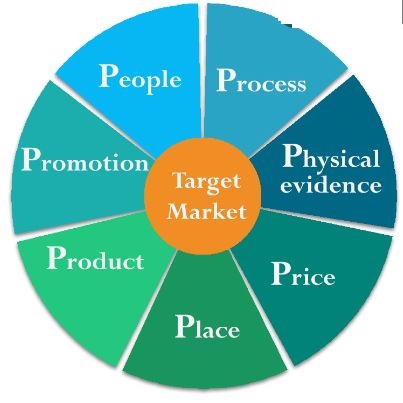
Marketing mix, also known as 7Ps of marketing includes individual marketing elements that form overall offer to customers. The concept was developed by marketing professor E. Jerome McCarthy and originally published in his book Basic Marketing. A Managerial Approach in 1960.[1] Initially the concept consisted of 4 Ps – product, place, price and promotion. As the field of marketing became more sophisticated additional 3 Ps – people, process and physical evidence were added by Bitner and Booms[2]. The additional 3Ps are also called ‘service mix Ps’, because they integrate important aspects of services into the marketing mix concept. Furthermore, in 2007 Larry Londre introduced another 2Ps – Partners/Strategic Alliances and Presentation. However, this latest addition has not been widely accepted among marketing researchers and practitioners, thus here we will stick to 7Ps of marketing. Marketing mix is a useful tool to tailor your products and services to the needs and wants of the target customer segment, but it is not a one-stop-shop for developing a comprehensive marketing strategy. A successful marketing strategy needs to address a range of other frameworks such as segmentation targeting and positioning, marketing communication mix and others. Product Element in 7Ps of Marketing Product or a service is the starting point in the marketing mix. Companies need to take into account the following variables, among others when developing new products: In what type of packaging is the product offered? Are products offered in various colours sizes etc.? What design and technical features differentiate the product in the competition? Are products durable and robust enough to appeal to the needs and wants of the target customer segment? What are the levels of quality and functional performance? Can he product be customized to individual users? Is the product easy to use and maintain? Is the product upgraded regularly? Place…
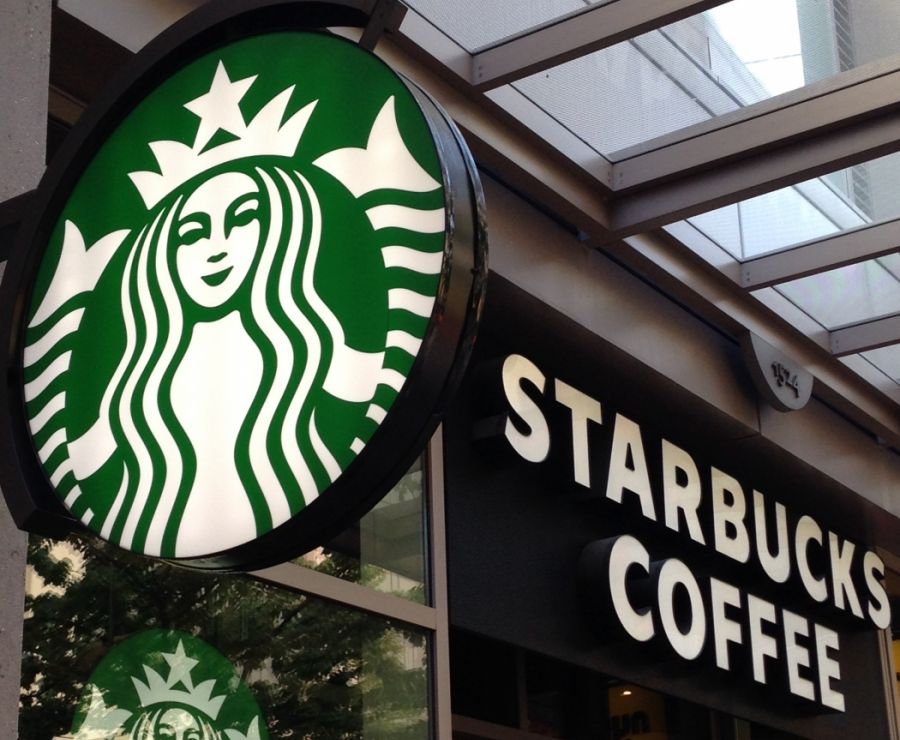
Starbucks 7Ps of marketing comprises elements of the marketing mix that consists of product, place, price, promotion, process, people and physical evidence as discussed below in more details. Product Element in Starbucks Marketing Mix (Starbucks 7Ps of Marketing) Starbucks sells coffee, tea and other beverages and a variety of fresh food items, including snack. In addition to its flagship Starbucks Coffee brand, the company sells products and services under the following brands: Teavana, Seattle’s Best Coffee, Evolution Fresh, Ethos, Starbucks Reserve and Princi. The global coffeehouse chain also sells merchandise products such as coffee- and tea-brewing equipment, Verismo® System by Starbucks, mugs and accessories, packaged goods, books and gifts. Starbucks products are known for high quality. Coffee is the main product sold by company and it sells more than 30 blends and single-origin premium coffees. Place Element in Starbucks Marketing Mix (Starbucks 7Ps of Marketing) Starbucks operates in 84 markets globally and its products can be purchased from the following places: 1. Company-operated stores. There were 17133 company-operated stores, which accounts for about 51% of total numbers of stores by the end of fiscal 2021.[1] Almost all company-operated stores are leased. Starbucks company-operated stores are usually located at high-traffic, high-visibility locations 2. Licensed stores. There were 16700 licensed Starbucks stores by the end of fiscal year 2021, representing about 49% of total numbers of stores.[2] The world’s largest coffeehouse chain offers customers the possibility to order online or through mobile app. Customers can explore the menu, customize their order according to their tastes and preferences and find nearest store location to collect their order. 3. Grocery and foodservice accounts. The world’s largest coffee retailer also sells its products via global leading supermarket chains such as Walmart, Tesco, Sainsbury’s and others. Only the most popular products such as Starbucks Espresso…
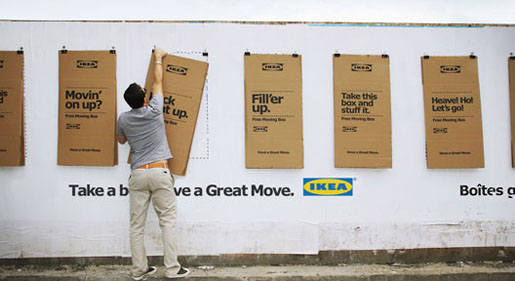
IKEA 7Ps of marketing comprises elements of the marketing mix that consists of product, place, price, promotion, process, people and physical evidence. The furniture retailer places greater emphasis on the price element of the marketing mix over other elements due to cost advantage business strategy it pursues. Product Element in IKEA Marketing Mix There are nearly 12000 products across IKEA range and the company renews its product range annually. The company develops approximately 2000 new products each year. IKEA products are designed by its in-house, as well as, contracted designers. IKEA promotes the idea of democratic design. The furniture maker adheres to the following five dimensions of democratic design: form, quality, function, sustainability and low price. IKEA products are associated with no-frills simplicity to sustain its cost leadership business strategy. Furthermore, some of IKEA products such as furniture are not assembled and ready to use by customer. Instead, the retail giant prefers to sell large furniture items as flat pack and customers have to assemble furniture themselves according to clear guidelines and illustrative instructions supplied by the company. Selling products in flat pack form immensely contributes to cost leadership business strategy because it is much cheaper to transport and store flat packs than ready assembled items. Place Element in IKEA 7Ps of Marketing IKEA has 11 franchisees operating in more than 500 locations in 63 countries.[1] The Swedish furniture chain promotes itself as a multi-channel retailer effectively integrating online and offline sales channels. Currently IKEA is concentrating on smaller city-centre stores and planning studios for kitchens, as the world’s largest furniture retailer tries to decrease its dependence on selling only through giant out-of-town warehouses. Price Element in IKEA Marketing Mix IKEA pricing strategy integrates the following: 1. Cost leadership. Competitive costs are placed at the core of…
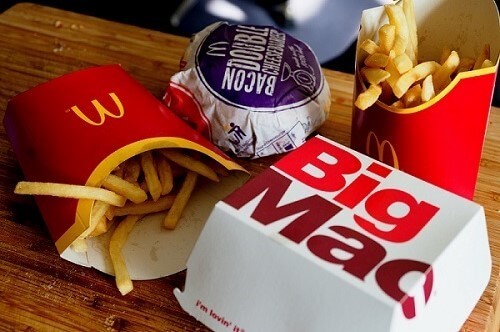
McDonald’s 7Ps of marketing comprises elements of the marketing mix that consists of product, place, price, promotion, process, people and physical evidence. Product Element in McDonald’s Marketing Mix (McDonald’s 7Ps of Marketing) McDonald’s restaurants offer a substantially uniform menu, although there are geographic variations to suit local consumer preferences and tastes. The fast food chain sells a wide range of fast food products such as hamburgers and cheeseburgers, Big Mac, Quarter Pounder with Cheese, Filet-O-Fish, several chicken sandwiches, Chicken McNuggets, wraps and french fries. The company also offers salads, oatmeal, shakes, McFlurry desserts, sundaes, soft serve cones, pies, soft drinks, coffee, McCafé beverages and other beverages.[1]Although, the company has long announced its pledge to increase the nutritional value of its meals, McDonald’s foods widely remain to be perceived as unhealthy. Place Element in McDonald’s Marketing Mix (McDonald’s 7Ps of Marketing) There are 40,031 McDonald’s restaurants in 119 countries.[2] As of December 2021 in total 37,295 stores, or 93%, were franchised. According to its aggressive expansion business strategy, the company aims to establish its presence in urban, as well as, in rural areas. The company states that “McDonald’s looks for the best locations within the marketplace to provide our customers with convenience. We build quality restaurants in neighbourhoods as well as airports, malls, tollways, and colleges at a value to our customers”.[3]. Generally, major fast food restaurants tend to cluster and in most locations, where there is a McDonald’s, there is also a Burger King right across the street.[4] Price Element in McDonald’s Marketing Mix (McDonald’s 7Ps of Marketing) McDonald’s pricing strategy comprises the following: 1. Economy pricing. McDonald’s follows cost leadership business strategy and accordingly, its foods and drinks are offered for competitive prices. The fast food chain offers customers the possibility to dine for a fraction of costs that are charged…
